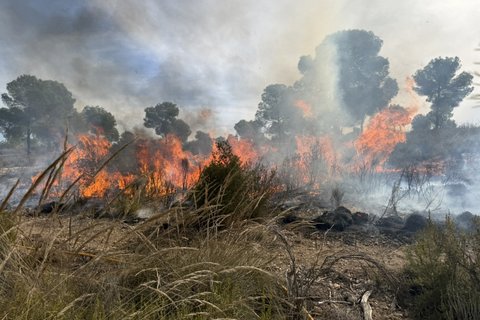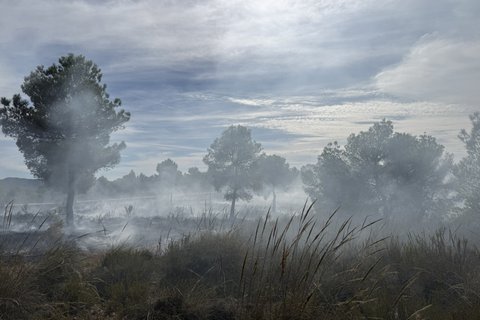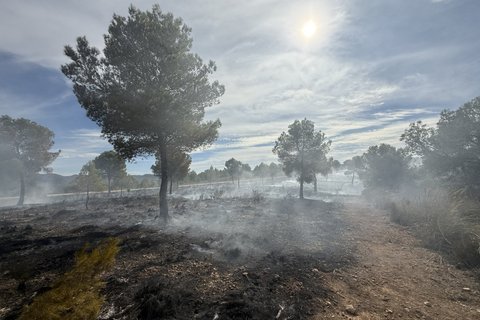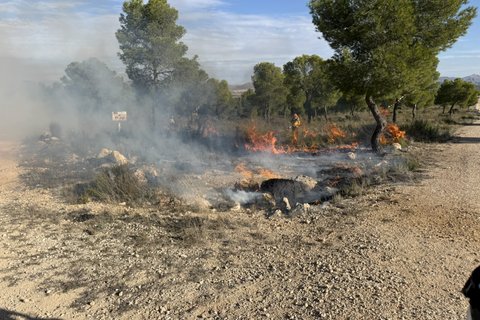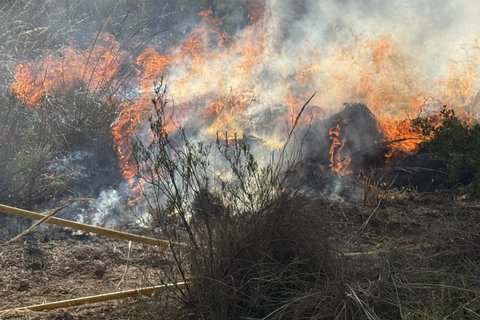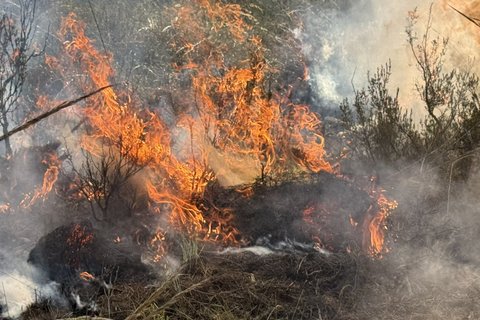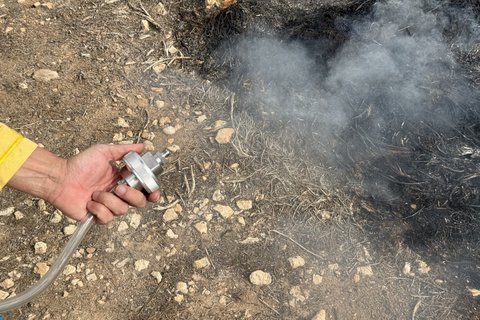Prescribed Burning Campaign in Spain
Albacete (ES), 31.10.2025
1st Experiment by LSC BioSmoke
From 23 October to 30 October, a team from the Aerosol Microphysics Department (AMP)—consisting of Dr. Thomas Müller, Dr. Arun Babu Suja, and PhD student Yifan Yang—conducted measurements during a prescribed burning campaign in Spain as part of the Leibniz ScienceCampus “Rauch und Bioaerosole im Klimawandel” (BioSmoke) project.
The team is working on WP 2.1: Atmospheric properties of smoke particles, which aims to improve our understanding of smoke emissions from different types of vegetation and to investigate how the physicochemical properties of smoke aerosols evolve during transport, influencing their radiative and cloud-forming properties.
The TROPOS backpack system was deployed to measure the physical properties of smoke aerosols, continuing its successful use in previous field campaigns. In addition, a set of low-cost sensor units was mounted on trees in and around the burning area to measure PM, CO₂, temperature, relative humidity, VOCs, and NOx indices. Filter samples were also collected for subsequent chemical and optical analyses.
This campaign was carried out in collaboration with Prof. Jorge de las Heras at the University of Castilla-La Mancha, Albacete Campus, who has extensive experience with prescribed-burning experiments. Prescribed burning is widely practiced in Spain to reduce fuel load and thereby prevent large wildfires. The burn location is roughly 100 km southeast of Albacete. For scientific purposes, prescribed burning provides a controlled environment to study the characteristics of smoke aerosols.
In this campaign, an area of approximately 1 km × 50 m was burned over two days, with each burn lasting around four hours. The TROPOS team successfully collected valuable datasets and filter samples. Preliminary observations show that PM₁₀ concentrations reached about 200 times the background level, while black carbon concentrations increased up to 3000-fold during the burn. Further analysis of these results will be presented in upcoming reports and publications—stay tuned.
This was the first prescribed burning campaign within the BioSmoke project and provided substantial practical experience. The next campaign is planned for next year, and we are very much looking forward to continuing this work.
Yifan Yang
News from LSC BioSmoke (including newsletter): https://www.leibniz-biosmoke.de/en/main-page/news/general-news


